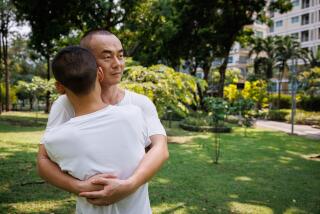Laotian youths’ ordeal points to Hmong’s plight
- Share via
BAN KHEK NOI, THAILAND — It was the fear of persecution that drove Yang Pahua to flee her native Laos -- twice.
Yang, 17, is one of 21 girls and five boys whose stories have drawn new attention to the plight of the Hmong, an ethnic minority. Their families first fled Laos in 2004 for an informal refugee settlement in the Thai province of Phetchabun. The youths were sent back to Laos in December 2005.
In June this year, it emerged that a dozen of them had run away again. They have now made it back to Phetchabun.
The youths share the tragedy of thousands of Hmong who are hiding in the jungles of Laos or living in limbo in Thailand. The Hmong are viewed with suspicion by Laos because they fought in the CIA-backed “secret war” of the 1960s and 1970s against the communists who are now in power. Some, including the youths, also are Christians -- at a time when the Vientiane government views proselytizing as a challenge to its authority in a mostly Buddhist country.
Hmong who escape across the border risk a hostile reception in Thailand, which has deported more than 300 in the last year. Thai officials have reserved the right to send back Laotian Hmong, whom they no longer consider political refugees.
“Now, I am being sought after by both the Lao and Thai governments,” Yang said. “I would like to plead for help from humanitarian agencies. . . . I can’t continue to live like this.”
Yang, her mother and her four siblings were among the Hmong who formed an early refugee community at Huay Nam Khao village, about 60 miles south of the Laotian border, in 2004. The number grew fast, with the latest Thai military survey putting them at 7,700.
Yang first fled to Thailand when her father was killed after his return from a six-month visit to his brother in America, she said. She says Laotian security forces suspected him of channeling funds from Hmong Americans to anti-government rebels.
In 2005, the youths left the camp for choir practice at a church and unwittingly strayed too far. Thai officials jailed them, then secretly deported them and their teacher back to Laos.
For more than a year afterward, neither Thai nor Laotian officials acknowledged they knew the group’s whereabouts. Yang said she and 20 other girls were detained for two months in Pakxan, 80 miles east of Vientiane. Then they were transferred to Khammouan province, where they were forced to do farming and housework in harsh conditions.
The five Hmong boys and the female teacher were held in separate locations, and their fate remains unknown.
Tears flowing, Yang said she was tortured and sexually harassed by Laotian police officers. “He [a police officer] pushed my head against a cement wall and took off my clothes,” Yang said in an interview with the Associated Press in Thailand. “He touched and squeezed my breast and neck and kicked me.”
“He said to me . . . ‘Don’t think that I dare not kill you. You are just a minority group member living in this country. I can kill you any time.’ ”
She said police beat her for several days, deprived her of food and detained her in solitary confinement to make her falsely confess that she had conspired with Americans and Thais in anti-government activities, partly through spreading Christianity.
In April, Laotian officials said they had found the missing girls and sent them to live with relatives in various parts of the country. The government showed the girls, ages 13 through 18, to United Nations officials, diplomats and journalists at a ceremony marking their release.
But even while she was with relatives in Vientiane, Yang Pahua felt her life was under threat from police.
About a dozen of the girls then fled Laos again for Phetchabun. They are keeping a low profile for fear that the Thai government will send them back to Laos, but some talked to outsiders in hopes of getting help.
Their stories cannot be independently verified, and the Laotian government has said only that they were reunited with relatives. Yang said she stayed in hiding with her buddy, Vang Paku, 17, who she says suffers mental problems because of police beatings. Her friend’s answers were at times barely coherent.
The story of their group remains one of the saddest legacies of the Vietnam War. About 300,000 Laotians, many of them Hmong, fled into Thailand after the communists took over in 1975. Many resettled in the U.S.
In the meantime, thousands of Hmong retreated to the jungles -- some in fear, some to fight a hopeless rear-guard battle against the communists.
The desperate struggle for survival whittled their numbers down to scattered bands of starving people with a handful of rusty old guns and constantly on the run. Some surrender, and some cross into Thailand.
The tale of these remnants from the war garnered attention in early June when Vang Pao, 77, who led the Hmong guerrilla force and fled to the U.S after the 1975 communist victory, was arrested in California with 10 others for plotting to overthrow the Laotian government. They denied the allegation.
More to Read
Sign up for Essential California
The most important California stories and recommendations in your inbox every morning.
You may occasionally receive promotional content from the Los Angeles Times.













